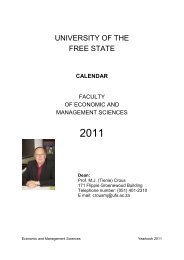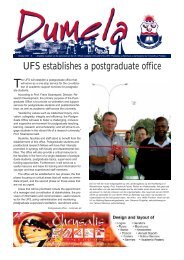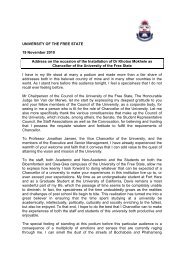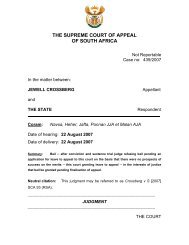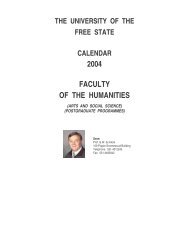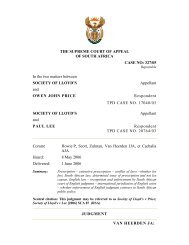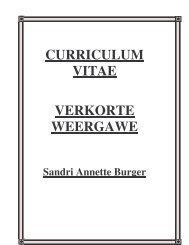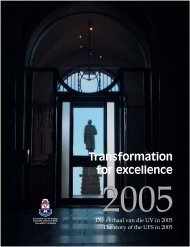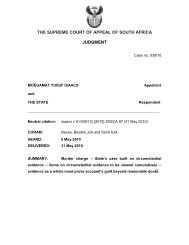THE SUPREME COURT OF APPEAL OF SOUTH AFRICA ...
THE SUPREME COURT OF APPEAL OF SOUTH AFRICA ...
THE SUPREME COURT OF APPEAL OF SOUTH AFRICA ...
Create successful ePaper yourself
Turn your PDF publications into a flip-book with our unique Google optimized e-Paper software.
15disclosure of facts or allegations. In this instance the purchaser of the magazine and thereader of the editorial had his or her attention directed to the article with the intention thathe or she should read the two in association and draw the logical conclusions.[47] The respondents’ answer is two fold: first that they were not interdicted frompublishing the identity of the applicant for the interdict; second that the editorial does notsay that Els brought the urgent application in his own interest and a reader wouldunderstand that he acted on behalf of someone else. There is no merit in eithersubmission.[48] The respondents were perfectly entitled to disclose the identity of the applicant forthe interdict and to say that he had obtain relief in particular terms. They were interdictedfrom publishing the allegations of abuse contained in the article in such close proximity tothe disclosure of identity of the applicant or in such a manner as to create the impressionthat the applicant and the abuser were one and the same person. That is exactly theimpression created by the editorial and the article read together. That that was theintention of the editor is also apparent from the choice which she exercised as appearsfrom the editorial.[49] The suggestion that any reader of normal intelligence would regard Els as acting inthe interest of another is disingenuous. It would be very unusual. The editorial creates nosuch impression and if the possibility were to occur to anyone it would be dispelled by thefailure of the editorial to draw that very material fact to the attention of its readers. There isthis further consideration: in the editorial the statement is made that the article was shownto the ‘alleged abuser’ whose name could not be made public for comment; this is followedimmediately by the statement that the name of the applicant for the interdict may bedisclosed – the public was simply challenged to put two and two together.[50] For these reasons I am left in no doubt that what appeared in the two magazines on21 February 2008 comprised the substance of the interdicted article and such publicationwas therefore a breach of the court order.



